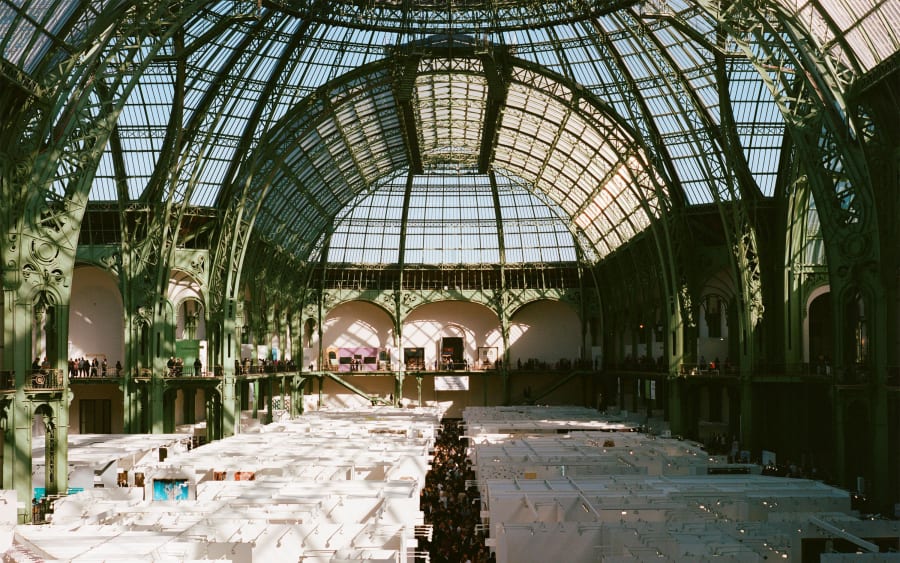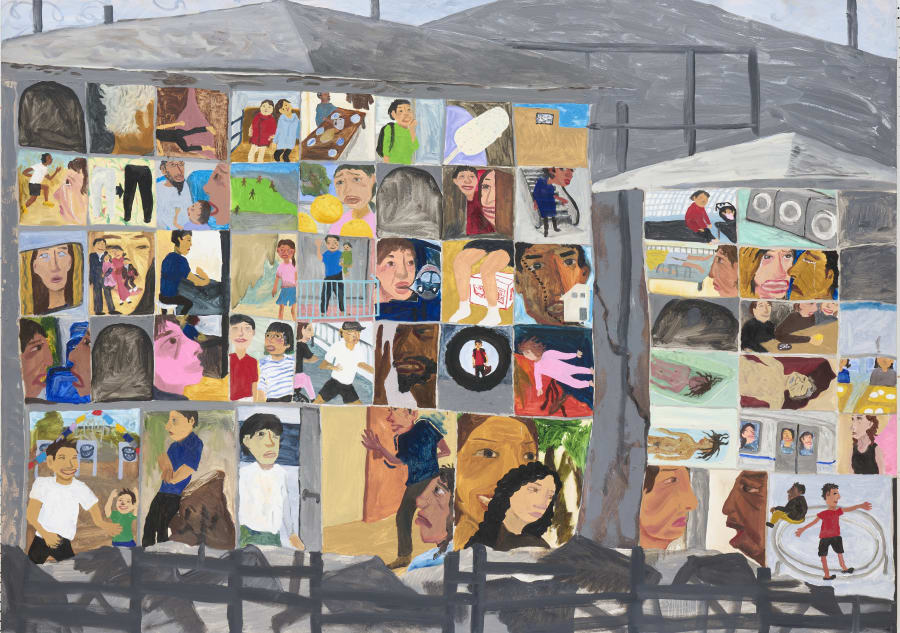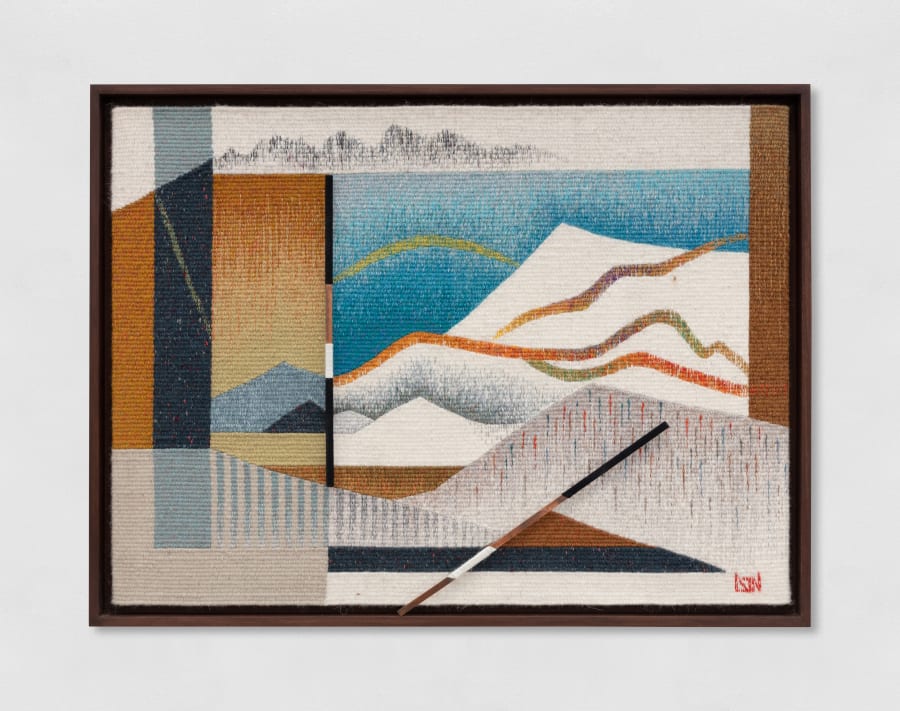Xiyadie
Blindspot Gallery (Hong Kong)
Xiyadie was born in 1963 in the Shaanxi region of China, where he initially led the life expected of him: he married, became a father, and earned a living as a farmer. During these years, the art of paper cutting was his refuge, and he used it to channel his repressed homosexuality. The mastery of this traditional technique was passed down to him by his mother, who hailed from the same region, famed for this traditional art form. In 2010, Xiyadie moved to Beijing, where his pigment-enhanced paper cut scenes were exhibited for the first time. Over a decade later, in 2024, the Western world discovered his pastoral, flamboyant works at the 60th Venice Biennale. In the Emergence sector Blindspot Gallery presents a group of previously-unseen works, representing lovers in perfect harmony.
Siyi Li
Cibrián (San Sebastián, Spain)
Two young women traverse the sprawling metropolis of Shanghai, their destination is unknown and the journey seems to unfold indefinitely. In the closed space of an electric car, their relationships gradually come to the fore. Siyi Li’s video New Energy (2025) stages five ultra-contemporary comic vignettes. The young Chinese artist, born in 1999, adopts here the fluid vocabulary of an era in which images flow between cinema, advertising, and fashion. The work, presented by Spanish gallery Cibrián, conveys an intoxicating sense of mobility in an era where everything is accelerating.
Mira Mann
Drei (Cologne, Germany)
Between 1966 and 1973, East Germany welcomed nearly 10,000 young Korean women recruited to address the shortage of nurses. Mira Mann, born in 1993 and based between Düsseldorf, Germany, and Paris, collected the testimonies of some of these women – including her own aunt. From this she created the installation objects of the wind (2024), initially presented at the 15th Gwangju Biennale in 2024 – a vernacular monument to these young immigrant workers imbued with buried memories and the seeds of rebellion. In Paris, Drei presents a slightly reduced version: A long makeup mirror with blinking lights is engraved with references to 19th-century Korean still lifes, and the shelf that runs beneath it hosts various everyday objects that tell stories without words.
Ethan Assouline
Gauli Zitter (Brussels)
The stand of Brussels gallery Gauli Zitter is almost like a stroll through the city. For the presentation ‘Dissociation variations’, French artist Ethan Assouline, born in 1994, has filled the booth with a variety of works, showcasing the breadth of his practice. The works are made up of found objects, sometimes painted and often adorned with banners printed with the artist’s poems. Inspired by the cracks and crevices of the neoliberal city, the artist presents his poetic and anxious ramblings via two main motifs: the clock, which punctuates measured time, and the spiral, which plunges into everyone’s myriad inner lives.
Kandis Williams
Heidi (Berlin)
Kandis Williams is an artist, writer, editor, and playwright. In her multifaceted practice, Williams, born in 1985 and based between New York, Los Angeles, and Berlin, recomposes traces of erased narratives in the style of an exquisite corpse. Recently, she went to South Korea to investigate the erased historical presence of African-American soldiers. Complex and transnational, this history brings the archetypes of American imperialism up against the negated racialized identity of military service. Williams adopts an impressively scholarly approach to materials gleaned from pop culture – cinema, press, and an array of notebooks. Heidi from Berlin presents the artist’s large-format collages as well as a video travel diary, constructing panoramas inhabited by mutant effigies, that are at once historical and horrific.
Kanitha Tith
ROH (Jakarta)
Cambodian artist Kanitha Tith is best known for her twisted wire sculptures. Their kinetic presence soaring through the air is immediately captivating. But on closer inspection, this laborious and time-consuming process reveals a more devious relationship to time, memory, and reconstruction. Through these gestures, the artist, born in 1987, translates the unspoken and intergenerational trauma left in her country by the Khmer Rouge genocide of the 1970s. ROH presents the artist’s signature sculptures accompanied by drawings and watercolors that convey a sense of transformation of evolution.
Tanoa Sasraku
Vardaxoglou Gallery (London)
The monumental sculpture Mascot (2025) holds space like a monolith. A thick wooden frame encloses a central silhouette of fringed textiles in earthy, mineral tones. Tanoa Sasraku, a young British artist born in 1995, conceived this hybrid in recognition of her roots. The homage to her late father, a fashion designer of Ghanaian origin, intertwines with the English landscapes where she grew up, composing layers of memory as well as fossil deposits. This is the last work in the ‘Terratypes’ series for which the artist went to collect ancient pigment from the soils of Cornwall, Dartmoor, the Jurassic Coast, and the mining regions of Ghana. The work presented in Paris by Vardaxoglou Gallery corresponds to the artist’s solo exhibition at the ICA in London opening the same month.
Nefeli Papadimouli
THE PILL (Istanbul, Paris)
With Nefeli Papadimouli, nothing is fixed because everything adapts to the individual and collective body. The Paris-based Greek artist works across sculpture, painting, costume, architecture, and installation. On the stand of Istanbul’s THE PILL, Papadimouli presents a set of three potentially activatable sculptures as well as drawings and photographs of performances. Idiopolis (2024), a recent work representative of the artist’s practice, takes the form of a long hanging wall made of dyed textiles, punctuated by four jumpsuits that lie in wait on the wall like skins on standy in a state of wakefulness.
Art Basel Paris will take place from October 24 to 26, 2025, at the Grand Palais. Discover the participating galleries of the Emergence sector here.
Ingrid Luquet-Gad is an art critic and PhD candidate based in Paris. She teaches art philosophy at Université Paris 1 Panthéon-Sorbonne.
Caption for header image: Nefeli Papadimouli, Skinscapes, 2022. Courtesy of the artist and The Pill ®.
English translation: Art Basel.
Published on October 9, 2025.


